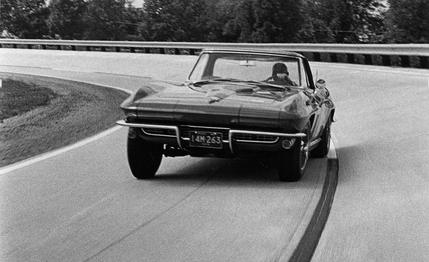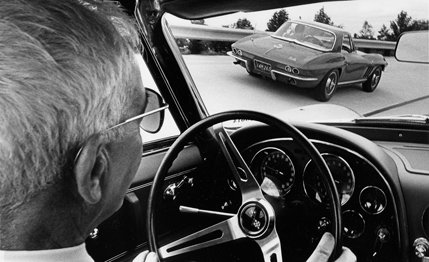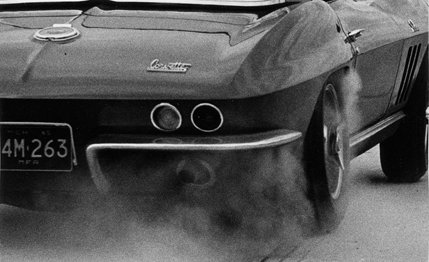
 Archived Road Test
Archived Road Test
Son of a Gun — just what the Corvette needed, more power! Chevrolet has replaced last year's top-of-the-line 396-cu. in. engine with a 427. According to the factory, horsepower remains unchanged at 425, but torque has gone up from 415 lbs/ft. at 4000, to 465 at the same rpm. We asked one Chevrolet man why the increase in displacement and torque didn't have a parallel increase in horsepower. "This was done primarily to save weight," he said, with a twinkling eye; "you must remember that cast-iron is very heavy, and by removing thirty cubic inches of it, we have made a significant reduction in weight."
Last year's 396 "porcupine head" Corvette was cranking out quite a bit more than its advertised 425 bhp, and with 427 cu. in., the gap between advertised and actual becomes even broader. However, Chevrolet insists that there are only 425 horses in there, and we'll just have to take their word for it. Though we feel compelled to point out that these are 425 horses of a size and strength never before seen by man — horses as tall as houses, with hooves as big as bushel baskets. When you have this many of those horses exerting their full force against the small of your back, you are profoundly impressed, and you will most likely lose all interest in counting anyway.


Last month we said that the most dominant feature of any Ferrari was its engine. Well the same thing is true of this big 427 Sting Ray, except that we'd go one step farther and say that it's the power, more than the engine, that overwhelms every other sensation. There's power literally everywhere, great gobs of steam-locomotive, earth-moving torque. And because the Corvette is a relatively small object, and considerably lighter than the other American production cars that are fitted with such engines, there's a direct, one-to-one relationship between the amount of throttle opening and the physical and emotional sensations the driver feels.
Other Corvettes, either the current models with 327 cu. in. engines, or the older ones with the original 283, had a more "European feel." They were very powerful, but they had a zippy, high-winding, no-flywheel feel to them that's missing from the big 427. According to Zora Arkus-Duntov, Chevrolet's Corvette specialist from the very beginning, this difference in sensation is directly related to the comparative torque curves of the two engines. The hottest version of the 327, the 375-bhp fuel-injection engine, produced 350 lbs/ft of torque at 4600 rpm. The new 427 produces 465 lbs/ft at 4000 rpm. As you can see, the 327's rate of acceleration was still increasing after the 427's torque curve had dropped off. Thus, even though the 427 is delivering more torque and more acceleration, its earlier torque peak results in less sensation of acceleration in the higher rpm ranges.


Except for compensatory suspension changes and a few other twists and improvements, the 427 Sting Ray is basically identical to any other Sting Ray. But the big jump in power that came with the jump from 327 to 427 makes those detail changes critical.